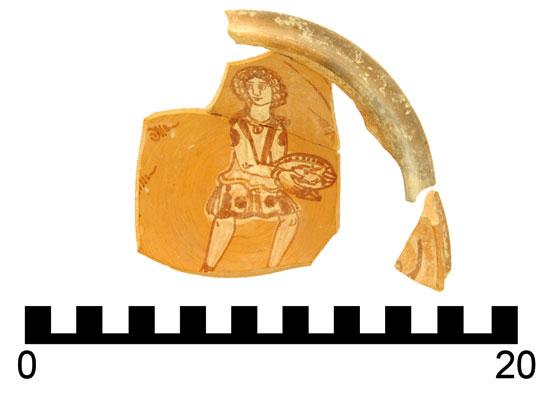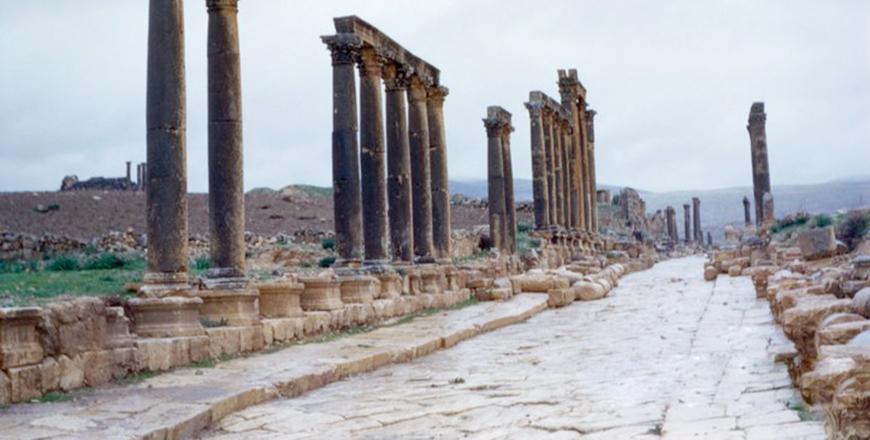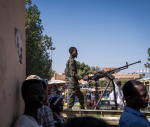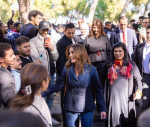You are here
Archaeologists studying a post-quake gap in Jerash history
By Saeb Rawashdeh - Apr 07,2016 - Last updated at Apr 07,2016
AMMAN — The quarter close to Temple of Artemis in northwestern part of ancient Gerasa (Jerash) has not been explored enough in the past, so the aim of an archaeological project initiated by German and Danish universities in 2011 has been to investigate material evidence in the highest area within the city’s boundaries.
“The idea was developed by Rubina [Raja] and me,” said Professor Achim Lichtenberger from University of Bochum. We both had worked before on the Decapolis and Jerash, and planned to start this project.”
The heydays of Gerasa were in the late Roman and early Byzantine times, according to available evidence, but new research has proved that the city continued to be an important centre during early Islamic times as well. Nevertheless, the turning point was a devastating earthquake in 749AD, which destroyed the urban structure and depopulated the city.
Later on, in the Ayyobid/Mamlouk period (1174-1517), the city continued to live but did not reach the previous glory, according to scholars. The gap between the earthquake and establishment of Ayyubid dynasty has not been explored enough according to Raja, a professor of classic archaeology at the Denmark-based Aarhus University.
“There is some evidence for this period from the city centre,” she stressed. However, in the Northwest Quarter, where we are working, no noteworthy evidence for the intermediate period is available yet,” Raja claimed.
“We have found a small Mamluk hamlet in the Northwest Quarter. This hamlet is much smaller than the Roman, Byzantine and Early Islamic settlement,” Raja underlined.
However, the piece of evidence from the quarter is until today the most important item suggesting the Mamlouk presence in Jerash, “although it needs to be emphasised that more might have been there, but remains unpublished,” the scholar highlighted.
The so-called Golden River (the Chrysorrhoas), described in inscription and coins from the Roman period, played a very significant role in the development of the urban area. The city was split by the Yabbok River (the modern day Zarqa River) and the city sides had been connected with bridges.
Several monuments from the Roman and Byzantine epoch prove the importance of water supplies — Nymphaeum and two large baths, one in the eastern and another in western parts, archaeologists emphasised.
Gerasa was also a religious centre with around 20 churches and some of earliest mosques in the region.
The team used new scientific methods while researching the northwestern quarter of the ancient Gerasa: “We have implemented archaeometrical analyses that have been used for other places in the Mediterranean before, but which have been little used in Jerash,” explained Lichtenberger.
“They give us a lot of new data which is basic research which will have long-lasting impact for a better understanding of the city.”
The Northwest Quarter Project is still ongoing and the German-Danish archaeological team is looking forward to continuing its fieldwork.
“We hope to continue excavations this year. The application has been handed in to the Department of Antiquities [DoA] and we hope to continue our excellent cooperation with the DoA,” Raja said.
Related Articles
AMMAN — From the Roman period to Early Islamic times, Jerash had a “strong and continuous” pottery production, according to two scholars who
AMMAN — The settlement in Jerash (Gerasa) during the Middle Islamic period was much more extensive and complex than hitherto thought, said a
AMMAN — Roman Gerasa (Jerash) was divided by the steep Wadi Jerash in a north-south direction and in Antiquity it was called the “Gold River

















